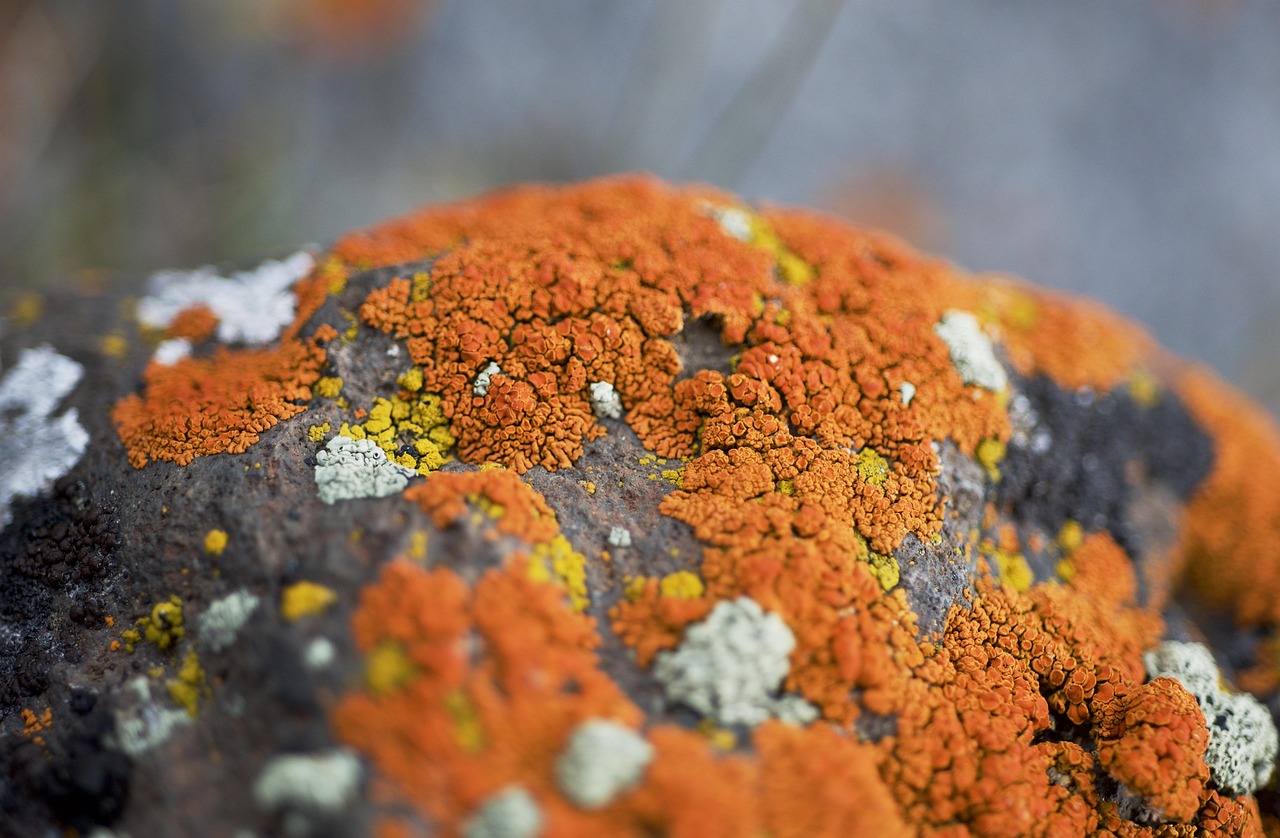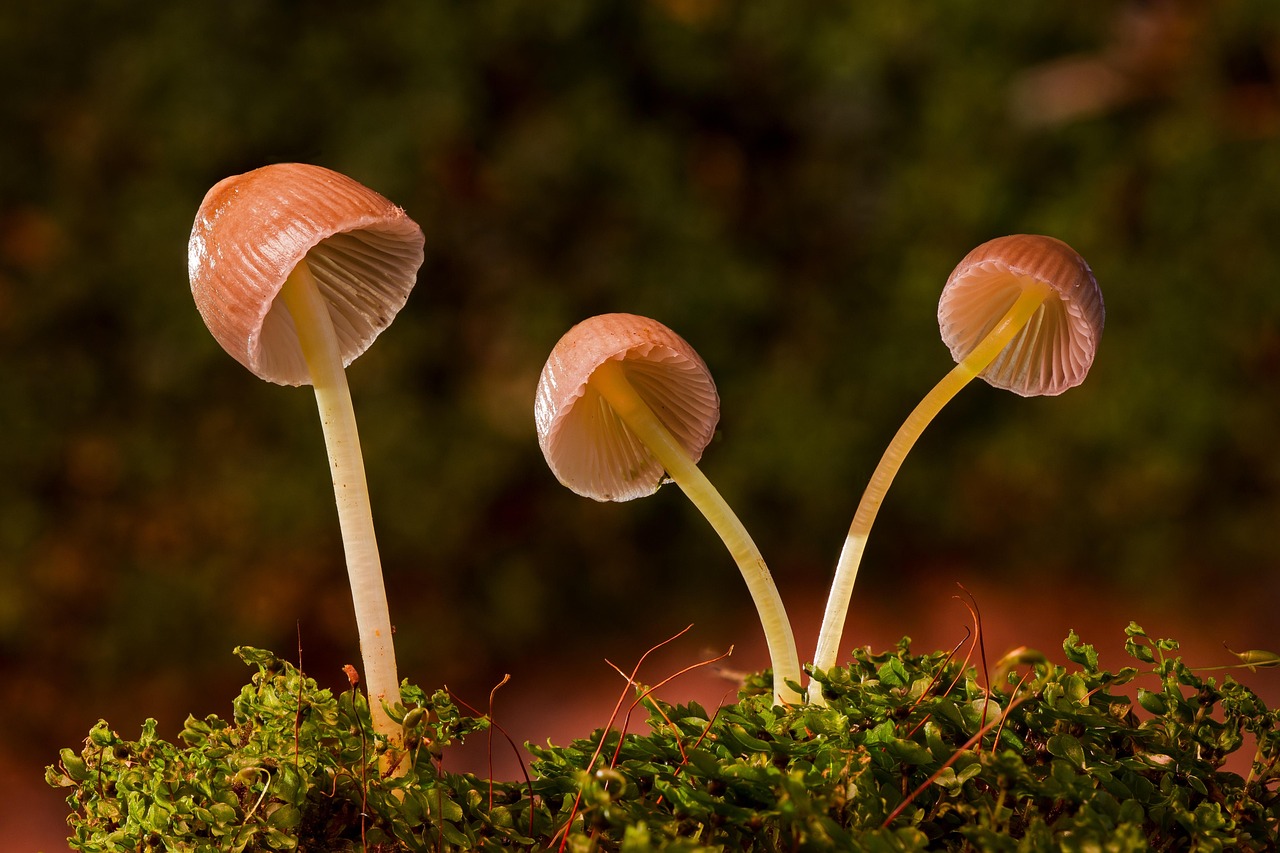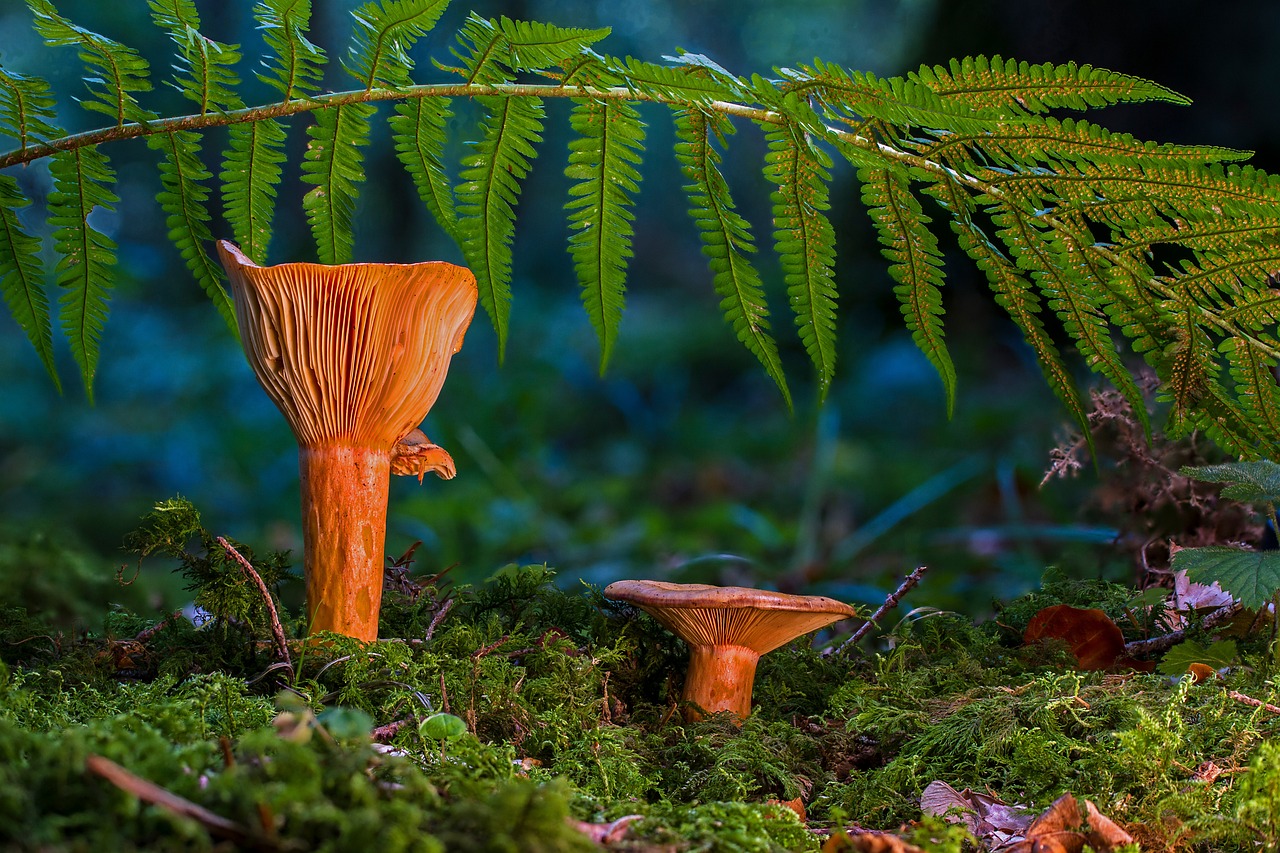Plants and fungi growing under oak trees exhibit a complex web of ecological relationships. These interactions include mutualism, competition, and parasitism, where plants benefit from mycorrhizal fungi for nutrients, while fungi receive carbohydrates produced by the plants. This dynamic fosters a rich biodiversity beneath the oak canopy.
Understanding the Ecosystem Under Oak Trees

Oak trees are not just majestic components of our landscapes; they also serve as foundational elements in their ecosystems. Their expansive canopies provide shade and shelter, creating a unique microhabitat that supports various plant and fungal species. This ecosystem is characterized by intricate relationships that enhance growth, nutrient cycling, and overall biodiversity.
Among these relationships, the association between plants and fungi stands out. Mycorrhizal fungi form symbiotic connections with tree roots. This partnership allows trees to access water and essential nutrients, such as nitrogen and phosphorus, from the soil. In return, the fungi obtain carbohydrates from the photosynthesis of the trees, creating a mutually beneficial arrangement that promotes the health of both parties.
In addition to mycorrhizal relationships, various other plants thrive under oak trees. These include herbaceous flora such as ferns, wildflowers, and groundcovers. Many of these plants have adapted to the specific conditions created by oak trees, including soil composition, light availability, and moisture levels.
The Role of Fungi
Fungi play multiple roles in forest ecosystems. They are crucial decomposers, breaking down organic matter and recycling nutrients back into the soil. This process enriches the soil and supports plant growth. Furthermore, some fungi are proficient at forming ectomycorrhizal associations with oak trees. These fungi envelop the roots in a protective sheath, enhancing nutrient absorption.
The diversity of fungi found under oak trees is astonishing. Some common types include:
- Truffles: Edible fungi that form symbiotic relationships with oak roots.
- Boletes: Known for their spongy caps and association with oak trees.
- Mushrooms: Various species that thrive on decaying wood or leaf litter.
The presence of these fungi not only impacts the oak trees but also influences the entire understory plant community. The interactions between these fungi and plants can determine which species thrive in these environments.
Plants That Flourish Under Oak Canopies
Numerous plant species find their home in the shade of oak trees. These plants have adapted to low light conditions and often have unique strategies for survival. Some of the notable plant species include:
- Wild Violets: These flowering plants bloom early in spring when sunlight reaches the forest floor.
- Bluebells: These perennial plants create beautiful carpets of blue in late spring.
- Ferns: Various fern species thrive in moist, shaded areas beneath oak trees.
The interplay between these plants and their fungal partners creates a rich tapestry of life that supports various wildlife species. Birds, insects, and other animals depend on this vegetation for food and habitat, further illustrating the interconnectedness of these ecological relationships.
Soil Composition and Its Importance
The soil beneath oak trees is often rich in organic matter due to the continuous leaf litter fall. This organic layer provides essential nutrients for both plants and fungi. The soil’s texture and composition can vary based on location and environmental factors, influencing which species can grow effectively under these trees.
| Soil Component | Role in Ecosystem |
|---|---|
| Organic Matter | Provides nutrients for plants and supports microbial life. |
| Clay | Holds moisture and nutrients, benefiting plant growth. |
| Sand | Improves drainage and aeration for root systems. |
This relationship between soil composition and plant-fungal interactions emphasizes the importance of preserving oak ecosystems. Understanding these dynamics is crucial for maintaining biodiversity and promoting healthy forest environments.
The Diversity of Fungi Under Oak Trees
The diversity of fungi found beneath oak trees is remarkable. These fungi play vital roles in the ecosystem, contributing to nutrient cycling and forming essential partnerships with various plant species. The presence of different fungal species can significantly influence the health and biodiversity of the area.
Types of Fungi Associated with Oak Trees
Several types of fungi thrive under oak trees, each contributing uniquely to the ecosystem. Some of the notable groups include:
- Ectomycorrhizal Fungi: These fungi form symbiotic relationships with the roots of oak trees. They help trees absorb water and nutrients while receiving carbohydrates in return.
- Decomposers: Fungi such as mushrooms and saprobes break down organic matter, recycling nutrients back into the soil.
- Pathogenic Fungi: Some fungi can be harmful to trees, causing diseases that may affect oak health.
These diverse fungal types create a complex network that not only benefits oak trees but also supports various other plant species and wildlife in the ecosystem.
Fungal Life Cycle and Reproduction
Understanding the life cycle of fungi is essential for grasping their ecological role. Fungi reproduce through spores, which can be dispersed by wind, water, or animals. Once spores land in a suitable environment, they germinate and form mycelium, a network of filaments that absorb nutrients.
The reproductive structures of fungi vary widely. Some produce mushrooms, while others may form truffles or other fruiting bodies. The timing and conditions for reproduction are often influenced by environmental factors such as temperature and moisture levels.
Plant-Fungal Interactions
The interactions between plants and fungi are critical for ecosystem health. Mycorrhizae enhance plant growth by improving nutrient uptake and water absorption. This relationship is particularly beneficial in nutrient-poor soils where oak trees commonly grow.
Benefits of Mycorrhizal Associations
Mycorrhizal associations provide several advantages for plants growing under oak trees:
- Nutrient Acquisition: Fungi extend their hyphae beyond the root zone, increasing the surface area for nutrient absorption.
- Water Retention: Mycorrhizal fungi improve soil structure, enhancing its ability to retain moisture.
- Soil Health: These fungi contribute to soil fertility and structure by decomposing organic matter.
In return, plants supply fungi with carbohydrates produced during photosynthesis. This gives rise to a mutually beneficial relationship that fosters robust growth for both organisms.
Competition Among Plant Species
While many plants benefit from fungal associations, competition among them can also occur. Underneath oak trees, various plant species vie for sunlight, water, and nutrients. Some may thrive better than others due to their specific adaptations.
Factors influencing competition include:
- Light Availability: Taller plants may overshadow shorter ones, limiting their access to sunlight.
- Nutrient Demand: Species with higher nutrient requirements may outcompete others in nutrient-rich areas.
- Root Structure: Plants with deeper or more extensive root systems may access resources unavailable to others.
This competition shapes the composition of the plant community under oak trees, influencing which species dominate and how they interact with fungi.

Ecological Importance of Oak Ecosystems
The ecological relationships between plants and fungi under oak trees are vital for maintaining healthy forest ecosystems. They contribute to soil health, support biodiversity, and provide habitat for countless organisms.
The preservation of these ecosystems is crucial for ensuring that the intricate web of life continues to thrive. As we enhance our understanding of these relationships, we can better appreciate the importance of protecting oak forests and their unique biodiversity.
Impact of Environmental Factors on Oak Ecosystems

Environmental factors play a significant role in shaping the interactions between plants and fungi beneath oak trees. These factors include climate, soil type, moisture levels, and light availability. Each of these elements can influence the overall health and biodiversity of the ecosystem.
Climate and Its Effects
Climate affects oak ecosystems in various ways. Changes in temperature and precipitation can directly impact fungal growth and plant health. For instance, warmer temperatures can enhance the growth rate of fungi, while extreme heat may stress tree roots and limit their ability to engage in beneficial relationships.
Key climatic factors influencing these ecosystems include:
- Temperature Variability: Fluctuations in temperature can affect fungal reproduction and plant growth cycles.
- Precipitation Patterns: Changes in rainfall can lead to drought conditions or flooding, both of which affect the availability of water and nutrients in the soil.
- Seasonal Changes: Seasonal shifts can influence the timing of plant flowering and fungal fruiting, impacting interactions between species.
Soil Type and Composition
The type of soil beneath oak trees is crucial for determining which plants and fungi can thrive. Different soil types have varying capacities for holding water and nutrients. For example, sandy soils offer excellent drainage but may lack essential nutrients, while clay soils retain moisture but can become compacted.
Some common soil types found in oak ecosystems include:
- Sandy Soil: Well-draining but often nutrient-poor, limiting plant growth.
- Clay Soil: Retains moisture well but can hinder root penetration due to compaction.
- Loamy Soil: A balanced mixture of sand, silt, and clay, ideal for supporting diverse plant life.
The soil’s nutrient composition also affects the availability of essential minerals, influencing plant vigor and fungal activity.
The Role of Mycorrhizal Fungi in Nutrient Cycling
Mycorrhizal fungi are essential players in nutrient cycling within oak ecosystems. They facilitate the movement of nutrients from the soil into plant roots, significantly enhancing nutrient availability in the forest floor. This process is vital for sustaining plant health, especially in nutrient-poor environments.
Nutrient Types Transported by Mycorrhizal Fungi
Mycorrhizal fungi help transport various nutrients that are crucial for plant growth:
- Phosphorus: One of the most critical nutrients for plants, aiding in energy transfer and photosynthesis.
- Nitrogen: Essential for amino acids and proteins, contributing to overall plant growth.
- Micronutrients: Elements such as zinc, copper, and iron are also absorbed by mycorrhizal fungi, ensuring that plants have access to a full range of nutrients.
This symbiotic relationship allows oak trees to thrive in a variety of soil conditions while supporting other plants that share the ecosystem.
Impacts on Biodiversity
The interactions between mycorrhizal fungi and plants contribute significantly to biodiversity under oak trees. A diverse array of plant species can coexist because they utilize different strategies for resource acquisition. This diversity supports a wide range of wildlife, including insects, birds, and mammals that depend on this rich habitat for food and shelter.
The preservation of mycorrhizal networks is crucial for maintaining biodiversity. Damage to these networks can lead to declines in plant health and a decrease in overall ecosystem stability.
The Human Influence on Oak Ecosystems

Human activities can significantly impact the health of oak ecosystems. Urban development, agriculture, and land management practices can alter soil composition, disrupt fungal networks, and change water availability. These changes can have cascading effects on the interconnected relationships within these ecosystems.
Threats to Oak Ecosystems
Some common threats include:
- Deforestation: The removal of oak trees disrupts habitat and eliminates essential relationships between plants and fungi.
- Pesticide Use: Chemicals used in agriculture can harm beneficial fungi and degrade soil health.
- Climate Change: Altered weather patterns may affect plant growth cycles and fungal activity.
Recognizing these threats is essential for implementing conservation strategies aimed at protecting oak forests and their unique ecological relationships.
Conservation and Restoration Efforts
Given the significant threats to oak ecosystems, various conservation and restoration efforts are underway. These initiatives aim to protect existing oak forests, restore degraded habitats, and enhance ecological relationships among plants and fungi.
Strategies for Conservation
Effective conservation strategies can help maintain the health of oak ecosystems. Some of these strategies include:
- Reforestation: Planting native oak species in deforested areas helps restore habitat and rebuild fungal networks.
- Soil Management: Implementing practices that enhance soil health, such as reducing pesticide use and increasing organic matter, supports the growth of beneficial fungi.
- Public Awareness: Educating communities about the importance of oak ecosystems encourages participation in conservation efforts and fosters a sense of stewardship.
By focusing on these strategies, conservationists can work to ensure that oak ecosystems remain vibrant and functional for future generations.
Restoration of Mycorrhizal Networks
Restoring mycorrhizal networks is crucial for revitalizing oak ecosystems. This can be achieved through:
- Inoculation: Introducing beneficial mycorrhizal fungi into degraded soils can help restore nutrient cycling and enhance plant growth.
- Promoting Biodiversity: Encouraging a diverse range of plant species can support a more robust fungal community, leading to healthier ecosystems.
- Monitoring and Research: Ongoing research into fungal diversity and plant interactions can help refine restoration techniques and improve outcomes.
These efforts not only benefit oak trees but also enhance the overall biodiversity of forest environments, leading to healthier ecosystems.
Final Thoughts
The intricate relationships between plants and fungi under oak trees form a vital part of our forest ecosystems. These relationships not only support the growth and health of oak trees but also nurture diverse plant communities and wildlife. Understanding these ecological connections highlights the importance of preserving oak forests, as they play a critical role in sustaining biodiversity.
As we face increasing environmental challenges, it is essential to prioritize conservation efforts aimed at protecting oak ecosystems. By employing effective management strategies and fostering public awareness, we can safeguard these unique habitats for future generations. The delicate balance of life beneath oak trees serves as a reminder of nature’s interconnectedness, emphasizing the need for sustainable practices that respect and protect our natural environments.
In conclusion, the ecological relationships between plants and fungi under oak trees are complex yet essential for maintaining healthy forests. The ongoing efforts to conserve and restore these ecosystems underscore our commitment to preserving biodiversity and promoting ecological resilience in the face of changing environmental conditions.
